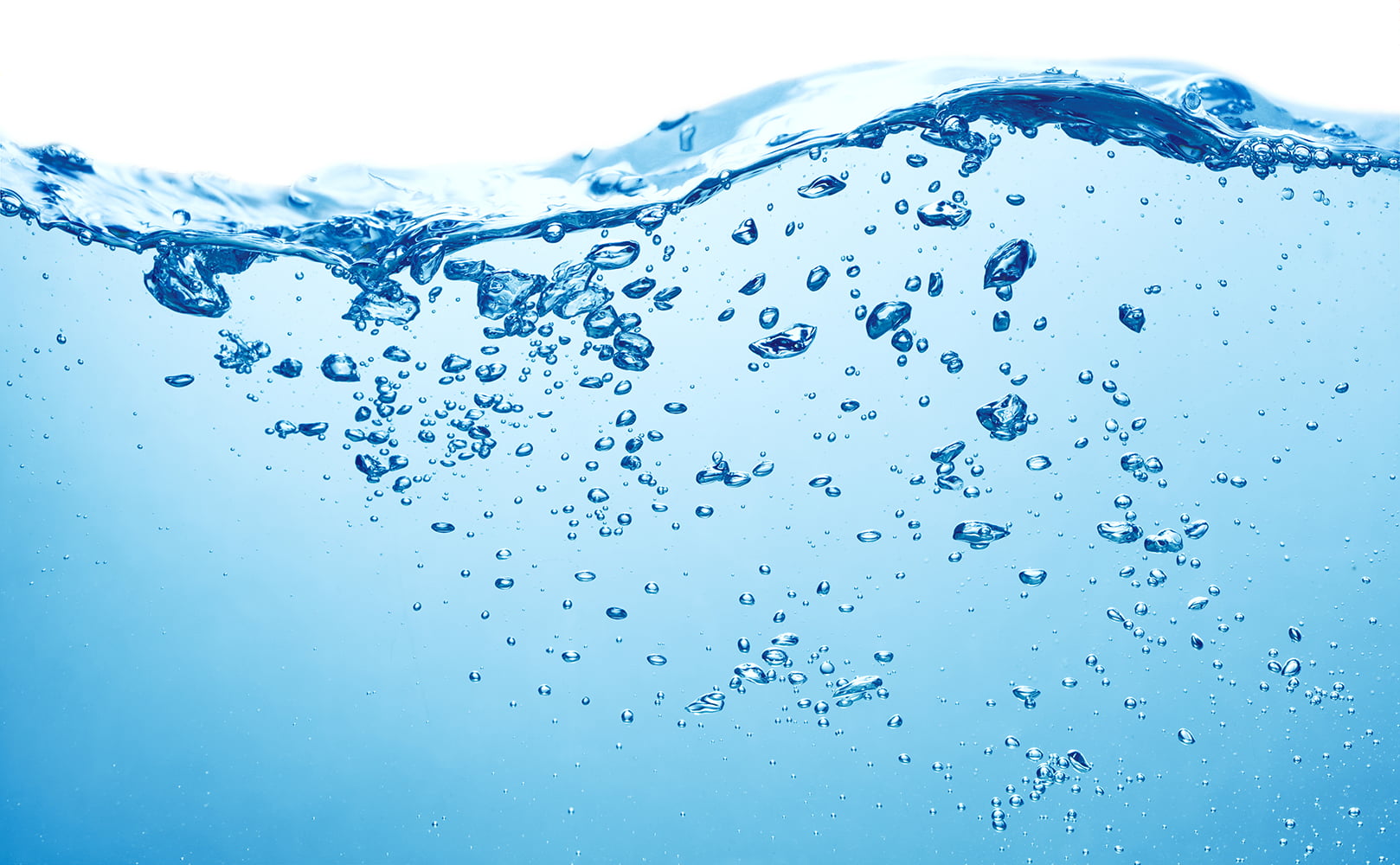How Pure Is Reverse Osmosis Water?
Written by: Alexandra Uta // Last Updated: Sep 1, 2023
This page may contain affiliate links. If you buy a product or service through such a link we earn a commission at no extra cost to you. Learn more.
Whenever reverse osmosis is discussed, you’ll often see strong claims about its purification strength.
Just how pure is reverse osmosis water though, and how can you measure that in the first place?
Let’s find out!
Key Takeaways
- In most cases, reverse osmosis water is highly pure, with close to no impurities left.
- How pure exactly depends on several factors, such as feed water quality, pressure, and temperature, and the RO purification process itself.
How Pure Is Reverse Osmosis Water?
So, how pure is reverse osmosis water?
In many cases, reverse osmosis water is almost completely pure, meaning pure H2O molecules, with the concentration of impurities being close to zero. That said, exactly how pure RO water turns out to be after the purification process depends on multiple factors, most importantly feed water quality, feed water pressure, feed water temperature, and the applied RO process itself.
The main measure for reverse osmosis water purity is low TDS levels – or total dissolved solids. This is something you can test on your own with a device called TDS meter, that can be bought at most hardware stores, or even with simple household materials.
Alternatively, you can order a laboratory analysis, for which you’ll have to submit a sample of your RO water. This is a more thorough evaluation which will provide you with a full list of all impurities left in your RO water, as well as their exact concentrations.
Measuring RO Water Purity Using TDS
Measuring the TDS levels of reverse osmosis water is the best way to get an idea of your water quality with tools that you can use at home. You can use an electronic TDS meter for the most accurate results, or you can go with the cheaper option of using filter paper instead. The second method is a bit more involved and less precise, but it’s still an option in a pinch.
What Is TDS (Total Dissolved Solids)?
As the name implies, total dissolved solids (TDS) refers to the concentration of dissolved matter in your water. Note that this includes both organic as well as inorganic matter – some people get confused by the name and assume it only refers to things like sediment.
Keep in mind that a high TDS level is not necessarily a bad thing, at least not without knowing what exactly is dissolved in your water in the first place. It’s possible that you simply have a higher concentration of beneficial minerals, for example. However, high TDS levels could potentially point to issues with the performance of your reverse osmosis system. This depends on the ratio between the TDS levels of filtered water and the feedwater.
How Do You Measure TDS in Reverse Osmosis Water?
The simplest way to measure the TDS levels of reverse osmosis water is by using a TDS meter. This is a small, portable electronic device which resembles a thermometer in its appearance. It can give you a very accurate reading of the TDS levels of your water, although it won’t tell you what specific impurities are causing those levels.
Alternatively, you can use filter paper – an old and tried solution that works with household items. To do that, simply follow these steps:
- Set aside one dish as an evaporating dish. Measure its weight.
- Take a sample of your RO water, measure its weight, store it in a separate container, and stir it well to distribute impurities evenly.
- Using a pipette, take a small sample from the water.
- Pour the sample into a separate container, running it through the filter paper. Repeat this several times to ensure you capture enough solids.
- Place the filter paper on the evaporating dish and take its weight.
With all the measurements you just took, you can now calculate your TDS levels with the following formula. Note that all weights should be provided in milligrams (mg):
TDS level = (Weight of evaporating dish with filler – weight of evaporating dish) X 1000 / weight of water sample
Determining RO Water Purity Through Lab Analysis
For a more in-depth examination of your reverse osmosis water, you can also send a sample to a laboratory for testing. This will cost some money – and time – but it’s the only way to know exactly what your water contains, and in what concentrations.
To do this, simply contact a laboratory in your area and request a test. They will tell you how to take your sample, and in some cases might even provide you with a special container for it. Make sure to follow the lab’s instructions very carefully to avoid contaminating the sample after extracting it.
Is Reverse Osmosis Water Safe (or Bad) to Drink?
Reverse osmosis water is simply water with most of the impurities removed – so by definition, it’s completely safe to drink. There are no health issues associated with drinking reverse osmosis water, and some organizations like the CDC recommend reverse osmosis as one of the viable approaches to household water purification.
In fact, switching to reverse osmosis water usually leads to an overall improvement for most people. That’s because you’re no longer consuming the various contaminants likely present in your water supply, some of which can be quite harmful when they accumulate over time.
The only potential problem you might encounter is that reverse osmosis lacks minerals. If you’re used to obtaining some of your minerals through your water, this could be a problem in the long term. But it’s also very easy to address. You can add a remineralization filter to your reverse osmosis system, or simply use mineral drops. The WHO recommends adding 20-50 mg/l of calcium and 10-30 mg/l of magnesium to reverse osmosis water to ensure it’s properly balanced.
What Is Reverse Osmosis Exactly and How Does It Work?
With all that said, how does reverse osmosis work in the first place, and why is it so effective at purifying water?
It all comes down to one main component – the RO membrane. This membrane is lined with extremely tiny pores (as small as 0.0001 microns!), which only allow water molecules to pass through. The reverse osmosis system pushes water against this membrane using high pressure, and all contaminants get left behind and ejected with the wastewater stream.
Before that, water is passed through a series of pre-filters that target certain contaminants, improving the effectiveness of the membrane. Post-filters apply final polishing touches like further improving the taste and/or smell of water with activated carbon.
The final result is pure, clean water, stripped of contaminants, typically stored in a small tank for easy access. The process requires no electricity and minimal maintenance (at least compared to other water treatment options), making it a very attractive option for filtering water on a household scale.
Reverse osmosis systems are highly customizable and come in different types. You can filter your entire household’s water supply, or focus on one or more points of use. You can also add and remove pre and post-filters in order to target a specific set of contaminants as necessary.
Pros and Cons
Pro: Fresh Water On Demand
Purifying your water with reverse osmosis means that you’ll always have access to fresh water on demand. With the way modern systems are designed, you won’t experience any annoying downtime when you feel thirsty and want to grab a glass of filtered water.
Pro: Improved Smell and Taste of Water
Reverse osmosis water smells and tastes better than regular unfiltered water in almost every case. That’s because various contaminants contribute to giving water unpleasant aesthetics, and those contaminants get stripped out by the treatment process.
Pro: No Power Required
You don’t need electricity to purify your water using reverse osmosis – just sufficient pressure in your plumbing. The only exception is when you need to run pumps to raise the pressure, but that’s usually an individual scenario.
Pro: No More Bottled Water
You can say goodbye to all those bottles of water you have to carry from the store on a regular basis, if you’ve been doing that until now. You’ll never have the need to drink bottled water again, and this will also relieve you of a noticeable burden when it comes to taking out the trash or recycling.
Pro: Highly Customizable
If you use a reverse osmosis system to filter your water, you can customize it to your exact liking, adding and removing filters as you deem fit until it targets the exact set of contaminants you want to deal with. The design of modern household reverse osmosis systems makes this very easy compared to some other water treatment options.
Pro: No Chemicals Used
The filtration process is entirely mechanical and doesn’t rely on any chemicals being added to the water, unlike some alternative approaches to water treatment.
Con: Wastes Water
Producing reverse osmosis water results in some waste due to the way the process works. You can expect your water consumption to increase 3-4 times for the water line feeding the reverse osmosis system. If you’re using a whole house filter, this means that your overall consumption will go up. Don’t worry though, there are ways to reduce the amount of water wasted in the process if that concerns you.
Con: Removes Minerals
Water naturally contains various minerals by default. That’s not a bad thing – in fact, it’s healthy to consume them in reasonable amounts. If you switch to drinking reverse osmosis water, you might have to compensate for the lack of those minerals by using mineral drops or a remineralization filter. This depends on your diet and overall health though.
Con: Takes Time to Filter
Producing reverse osmosis water takes some time, which is why most systems come with an integrated storage tank. This is normally not a problem, but could become a concern if you’re limited on space and can only buy a system with a small tank.
If you have any thoughts about the question, how clean is reverse osmosis water, please don’t hesitate to leave a comment below!
Information provided on BOS is for educational purposes only. The products and services we review may not be right for your individual circumstances.
We adhere to strict editorial guidelines. Rest assured, the opinions expressed have not been provided, reviewed, or otherwise endorsed by our partners – they are unbiased, independent, and the author’s alone. Our licensed experts fact-check all content for accuracy. It is accurate as of the date posted and to the best of our knowledge.




